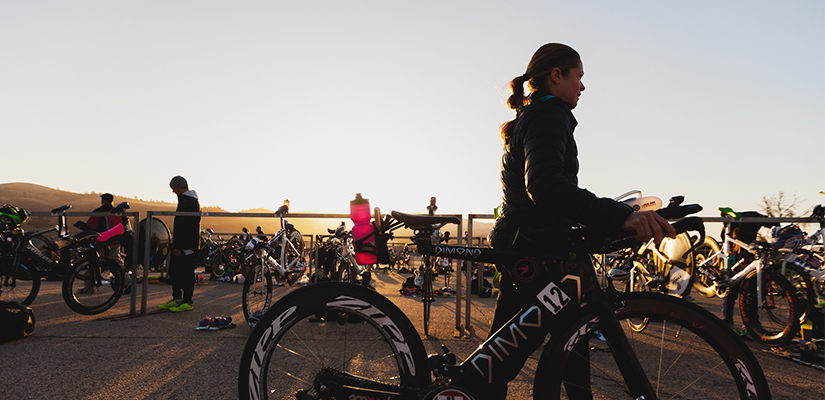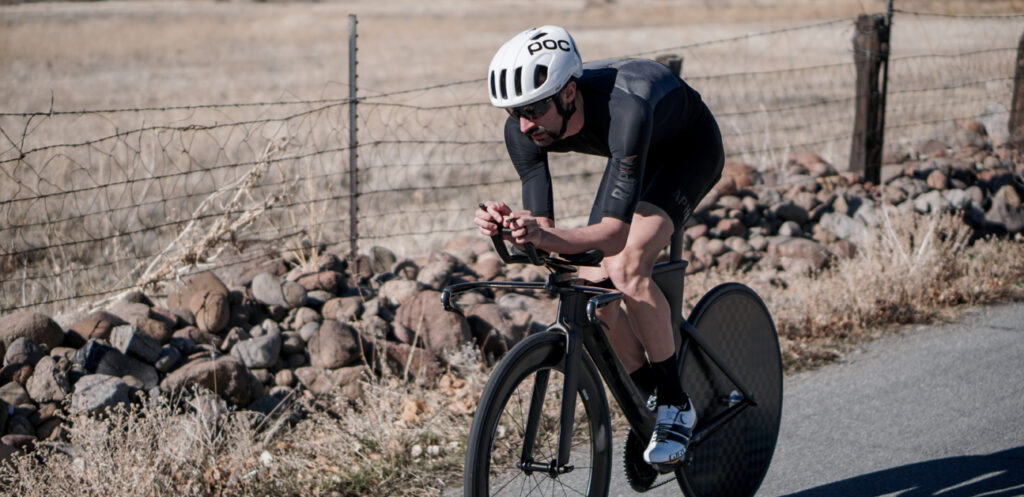Triathletes: How to Choose and Adjust Your Training Plan

Knowing which training plan is best for you is the first step toward becoming a stronger triathlete.
To help triathletes discover their best-matched triathlon training plan, we have a video featuring our Head Coach Chad.
All Successful Triathletes Follow a Training Plan
Coach Chad designed our Sprint-, Olympic-, Half- and Full-Distance triathlon training plans with full written swim, bike and run instructions. Every plan is broken up into three sequential phases: Base, Build and Specialty. Each phase serves a different purpose. As you progress through your training, your plan evolves to meet the unique demands of your goal event.
Base Phase: During the Base Phase, your training is focused on cultivating your base fitness, building strength and refining your technique. Together, these will establish a solid foundation of form and fitness.
Build Phase: Once you’ve worked through the Base Phase, it’s time to focus on raising your sustainable power. Whether you’re a sprint- or a full-distance triathlete, this phase of training will prepare your mind and body for the rigors of the more specialized training to come.
Specialty Phase: The final training phase is the most event-specific yet. In this phase, you’re going to fine-tune your fitness to best suit the demands of your event’s distance.
How to Choose the Appropriate Plan Volume
Each of our event-specific Base, Build and Specialty training plans have three volume options: low, mid and high. There are two main factors, stress and time available to train, that will determine the volume that’s best for you.
#1 Stress: Consider the amount of training stress your body can handle. The demands of indoor training might be more intense than what you’re used to so take that into account when you choose your plan’s volume.
#2 Time: Decide how much time you can to dedicate to training. If you decide you have a lot of time to train, it’s important to remember just because you have the time does not mean you should pick a high-volume plan. It is OK to move between plan volumes once you learn more about how much training stress you can handle.
A word to the wise: If you’re having difficulty choosing between two volumes of a plan, choose the lower volume. You can always increase volume during your next training block.
How to Adjust Your Triathlon Training Plan
All TrainerRoad training plans are flexible. That means you have the power to adjust any training plan to fit your schedule and race calendar. If you’re wondering how to modify a plan in the event of having more or less time to train, or you’re curious about how to prepare for two different duration events, here’s what Coach Chad recommends.
What if I have less than the prescribed time to progress through Base, Build and Speciality?
Newer triathletes should prioritize their Base conditioning above all, but experienced triathletes can use their own judgement based on their current fitness. Almost every triathlete will benefit from a full Build Phase. So whenever possible, shoot for the full duration of your Build phase.
If necessary, the Specialty Phase can be reduced by going as far through the plan as time allows. In all cases, leave at least one week to taper your training prior to your event. This can be done using a scheduled recovery week or by making it all the way through the final weeks of your Specialty plan.
What if I have more than the prescribed number of weeks before my goal event?
After completing all three phases of training, do a couple of weeks of low-intensity work followed by a partial repeat of the Build Phase. This will set the stage for further increases in fitness following a second Specialty plan. Better recovered athletes should revisit the latter half of their build plan, while less recovered athletes will be better served by repeating the earlier half.
What if I have multiple races over the season?
If you have multiple races throughout the course of your season, you’ll have to decide the importance of each race. If you’re not sure how to do that, here’s a great post on how to prioritize your races and build a seasonal race plan. Once you’ve done that, you’ll then schedule your training to peak for your highest-priority race or set of closely scheduled races. It’s important to recognize that you can’t maintain your peak fitness for very long and effective training is cyclical in nature.
What if I have an upcoming race that is a different distance than my goal race?
Prioritizing your races is key. Your training plan selection will almost always focus on your longer event. During their Build Phase or even their Specialty Phase, for example, a full-distance triathlete can replace their weekend brick workout with a half-distance triathlon — but their training plan will still be focused on their full-distance race. The point is: You should always prioritize your training around your goal event.
Wrap Up
Choosing the triathlon training plan that’s right for you is critical to achieving success. With Coach Chad’s advice, you should now be ready to choose and follow a triathlon training plan. In his words — good luck and train hard!
